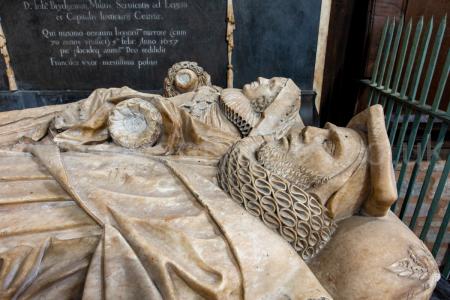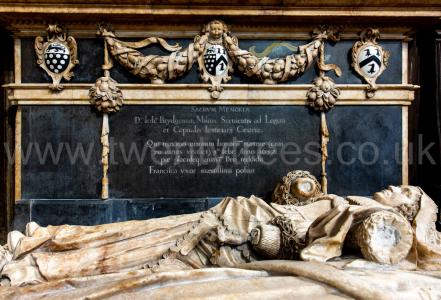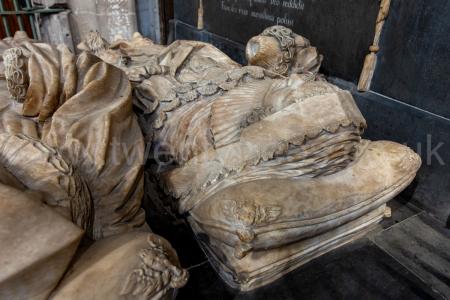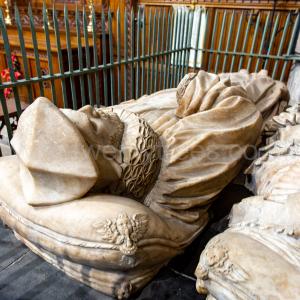Biography of Francesco Fanelli 1590-1653
Francesco Fanelli 1590-1653 is in Sculptors.
Around 1590 Francesco Fanelli was born in Florence, Italy.
After 05 Feb 1638 John Bridgeman was buried at St Laurence's Church, Ludlow [Map]. The monument is most convincingly attributed to the workshop of the tomb maker Samuel Baldwin of Bristol although some source suggest Francesco Fanelli (age 48); the carving reflects the Italian-influenced innovations of London tombmakers: the figures have naturalistic features and there are skilfully carved drapery and garlands. The monument was commissioned by his wife Frances Daunt (age 60); Bridgeman's will entrusted her to create a monument as she thought fit.
Frances Daunt:
Around 1578 she was born to Henry Daunt of Owlpen, Gloucestershire.
Around 1595 John Bridgeman and she were married at Owlpen, Gloucestershire. The difference in their ages was 41 years. In Jan 1656 she died.
In Jan 1656 she died.




In 1653 Francesco Fanelli (age 63) died.
Evelyn's Diary. 09 Jun 1662. Hampton Court [Map] is as noble and uniform a pile, and as capacious as any Gothic architecture can have made it. There is an incomparable furniture in it, especially hangings designed by Raphael, very rich with gold; also many rare pictures, especially the Cæsarean Triumphs of Andrea Mantegna, formerly the Duke of Mantua's; of the tapestries, I believe the world can show nothing nobler of the kind than the stories of Abraham and Tobit. The gallery of horns is very particular for the vast beams of stags, elks, antelopes, etc. The Queen's bed was an embroidery of silver on crimson velvet, and cost £8,000, being a present made by the States of Holland when his Majesty (age 32) returned, and had formerly been given by them to our King's sister, the Princess of Orange, and, being bought of her again, was now presented to the King (age 32). The great looking-glass and toilet, of beaten and massive gold, was given by the Queen-Mother (age 52). The Queen (age 23) brought over with her from Portugal such Indian cabinets as had never before been seen here. The great hall is a most magnificent room. The chapel roof excellently fretted and gilt. I was also curious to visit the wardrobe and tents, and other furniture of state. The park, formerly a flat and naked piece of ground, now planted with sweet rows of lime trees; and the canal for water now near perfected; also the air-park. In the garden is a rich and noble fountain, with Sirens, statues, etc., cast in copper, by Fanelli; but no plenty of water. The cradle-work of horn beam in the garden is, for the perplexed twining of the trees, very observable. There is a parterre which they call Paradise, in which is a pretty banqueting-house set over a cave, or cellar. All these gardens might be exceedingly improved, as being too narrow for such a palace.

